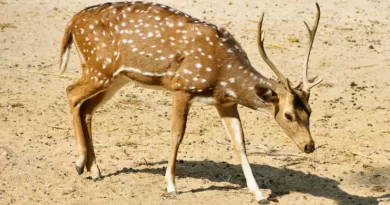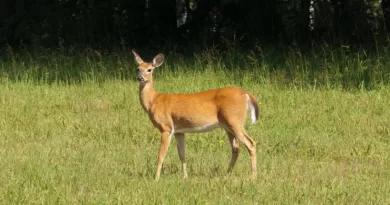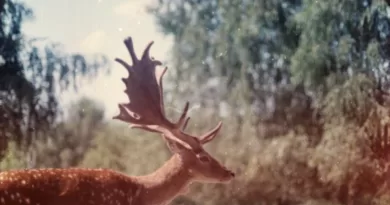When to Plant Turnips for Deer
Best Time to Sow Turnips for Deer
Turnips are a popular choice for attracting and supplementing deer diets, thanks to their high nutritional value and ability to grow in various conditions. To maximize their potential, it is important to sow turnip seeds at the right time. Understanding the best time to sow turnips for deer can significantly impact your success.
In general, turnips should be sown during late summer or early fall. This timing allows the plants to establish strong root systems and ensures optimal growth during the following months. For regions with mild winters, sowing turnips in early to mid-fall is recommended. However, if you live in an area with harsh winters, it is best to sow the seeds earlier in late summer. By carefully considering the best time to sow turnips for deer, you can provide a valuable food source that will attract and support deer populations in your area.
Ideal Growing Conditions for Turnips
Turnips are a versatile and nutritious food source for deer, thriving in a variety of growing conditions. However, providing the ideal environment will ensure that turnips flourish and attract deer to your property.
First and foremost, turnips require a well-drained soil with good moisture retention. They prefer a pH level between 6.0 and 7.0, which is slightly acidic to neutral. Testing your soil’s pH and, if necessary, adjusting it with lime or sulfur will optimize growing conditions for turnips. Additionally, turnips thrive in full sun, so choose a location that receives at least six hours of direct sunlight per day.
Choosing the Right Variety of Turnips for Deer
When choosing the right variety of turnips for deer, there are a few key factors to consider. First, you want to select a variety that is specifically bred for deer consumption. These varieties are typically more palatable and have a higher sugar content, making them more attractive to deer. Additionally, look for turnip varieties that have a larger bulb size, as this will provide more food for the deer and increase the overall attractiveness of the turnips.
Another important consideration is the time of year you plan to sow the turnips. Some turnip varieties are better suited for specific planting windows, so be sure to choose a variety that aligns with your desired planting time. It’s also worth noting that different varieties may have different maturation times, so keep this in mind if you have a specific timeline for when you want the turnips to be available for the deer. By selecting the right variety of turnips for deer, you can ensure that your planting efforts will be successful and provide the deer with a nutritious food source.
Preparing the Soil for Turnip Planting
To ensure successful growth and a bountiful harvest of turnips, proper preparation of the soil is essential. The first step is to clear the planting area of any debris or weeds to provide a clean slate for the turnip seeds. Using a garden fork or tiller, loosen the soil to a depth of at least 8 inches, breaking up any compacted areas. This will ensure that the roots of the turnips are able to penetrate easily into the soil, allowing for optimal nutrient absorption.
Next, it is recommended to conduct a soil test to determine the pH level and nutrient content of the soil. Turnips prefer a slightly acidic soil with a pH range of 6.0 to 6.5. If the test reveals that the soil is too acidic or alkaline, the pH can be adjusted by adding lime to raise pH or sulfur to lower pH accordingly. Additionally, based on the soil test results, organic matter such as compost or well-rotted manure can be added to improve the soil structure and nutrient composition.
By properly preparing the soil before planting turnips, you set the stage for strong, healthy growth and abundant harvest. The time and effort invested in soil preparation will pay off in the form of nutrient-rich turnips that will attract and supplement the diets of deer more effectively. With the right conditions, turnips can thrive, providing a valuable food source for deer in their natural habitats.
How to Plant Turnip Seeds
Turnip seeds should be planted at the appropriate time to ensure optimal growth and yield. The best time to plant turnip seeds is during early spring or late summer, when the soil temperature is around 50 to 86°F (10 to 30°C). Before planting, prepare the soil by removing any weeds or debris and loosening it with a garden fork or tiller. Turnips prefer well-drained soil with a neutral pH level of 6.0 to 7.0. If the soil is too acidic, you can add lime to raise the pH. It is advisable to conduct a soil test beforehand to determine the soil’s nutrient levels and pH level. Once the soil is prepared, make rows 12 to 18 inches (30 to 45 centimeters) apart, and sow the turnip seeds at a depth of 1/4 to 1/2 inch (0.6 to 1.3 centimeters). To aid germination, cover the seeds lightly with soil or compost.
Caring for Turnip Plants
Turnip plants require regular care to ensure optimal growth and development. Watering is one of the essential tasks in caring for turnip plants. It is important to maintain consistent moisture levels in the soil, ensuring that it is neither overly saturated nor too dry. The best practice is to water the plants deeply but less frequently, allowing the water to reach the deeper roots. This encourages robust root development and healthy overall growth.
Additionally, weeding is crucial to prevent competition for nutrients and ensure the turnip plants have ample space to thrive. Regularly inspect the plants for any unwanted weeds and remove them promptly. Mulching around the base of the plants can help suppress weed growth while also retaining moisture in the soil. However, it is important to leave some space around the stem to prevent rotting or disease. By implementing these care practices, turnip plants can flourish and provide an excellent food source for deer.
Protecting Turnips from Deer
One of the biggest challenges faced by turnip growers is protecting their crop from deer. These creatures are notorious for their love of turnips, often gobbling up entire plants in a single night. To safeguard your turnips from hungry deer, there are several effective strategies that you can employ.
First and foremost, investing in a sturdy and reliable deer fence can make a world of difference. A deer fence should ideally be around 8 feet tall to prevent these agile creatures from leaping over it. Additionally, it is essential to ensure that the fence is properly secured to the ground, as deer are adept at finding even the smallest gaps to squeeze through. Placing some type of sturdy barrier at the bottom of the fence can further deter deer from attempting to enter your turnip patch.
When to Harvest Turnips for Deer
Harvesting turnips for deer requires timing that maximizes their nutritional value and palatability. Generally, the best time to harvest turnips for deer is when the foliage begins to turn yellow and wilt. At this stage, the roots are typically well-developed and have reached their peak in terms of nutrient content. To determine the readiness for harvest, gently pull out a few plants and inspect the size and condition of the roots. Ideally, turnips should be harvested before they become excessively woody or fibrous, which can make them less appealing to deer.
Keep in mind that the timing of turnip harvest can be influenced by various factors, including the specific turnip variety, local climate, and intended use. Some hunters may prefer to harvest turnips earlier in the growing season when they are smaller and more tender. Alternatively, if turnips are being used as a winter food source, they can be left in the ground until after the first frost, as this cold weather helps to enhance their sweetness. It is essential to strike a balance between allowing the turnips to fully mature and ensuring they are not left in the ground for too long, as overripe turnips may become bitter or unappetizing to deer.
Storing Turnips for Deer
After harvesting turnips for deer, it is crucial to store them properly to ensure they remain fresh and nutritious. One effective method is to keep the turnips in a cool and dry place, such as a root cellar or a well-ventilated storage area. It is important to store the turnips away from direct sunlight and to avoid exposure to extreme temperatures, as this can cause them to spoil quickly. Additionally, it is recommended to remove any damaged or rotten turnips, as they can accelerate the decay process and affect the quality of the stored turnips.
Another useful tip for storing turnips for deer is to store them in breathable containers such as wooden crates or burlap sacks. These allow for proper air circulation, which helps prevent moisture buildup and reduces the risk of fungal growth. It is also beneficial to check the stored turnips regularly, inspecting for any signs of decay or spoilage. By promptly removing any affected turnips, you can prevent the spread of rot and prolong the shelf life of the remaining ones. Following these storage guidelines will ensure that your stored turnips for deer remain fresh and provide a nutritious food source for longer periods.
Using Turnips to Attract and Supplement Deer Diets
Turnips are an excellent choice for attracting and supplementing deer diets. These root vegetables are highly palatable to deer and provide them with essential nutrients throughout the year. By incorporating turnips into your deer management plan, you can help boost their overall health and attract them to specific areas for hunting or simply for observation.
To effectively use turnips as a deer attractant, it is important to plant them strategically. Consider planting turnips in food plots or other open areas where deer frequent. You can also mix turnip seeds with other deer-friendly crops to create a diverse forage blend. Remember to choose turnip varieties that are suitable for your region and growing conditions, as this will increase the chances of success. By providing a nutritious food source, turnips can play a vital role in attracting and supplementing deer diets, ultimately benefiting both deer populations and wildlife enthusiasts alike.
• Turnips are highly palatable to deer and provide essential nutrients
• Incorporating turnips into a deer management plan can boost overall health
• Plant turnips strategically in food plots or open areas frequented by deer
• Mix turnip seeds with other deer-friendly crops for a diverse forage blend
• Choose turnip varieties suitable for your region and growing conditions
• Providing a nutritious food source benefits both deer populations and wildlife enthusiasts.
What is the best time to sow turnips for deer?
The best time to sow turnips for deer is typically in late summer or early fall, around 6-8 weeks before the first expected frost.
What are the ideal growing conditions for turnips?
Turnips prefer cool weather and grow best in well-drained soil with a pH of 6.0-7.0. They also require full sun for optimal growth.
How do I choose the right variety of turnips for deer?
When selecting turnip varieties for deer, look for those specifically bred for wildlife food plots. These varieties are typically high in sugar content and have larger, more attractive tops.
How do I prepare the soil for turnip planting?
Before planting turnips, it is important to prepare the soil by removing any weeds or debris and loosening it with a garden fork or tiller. Adding organic matter and fertilizer can also help improve soil fertility.
How do I plant turnip seeds?
Turnip seeds should be sown at a depth of ¼ to ½ inch and spaced about 1 inch apart. They can be planted in rows or broadcasted over the desired area. Make sure to water the seeds immediately after planting.
How do I care for turnip plants?
Turnip plants require regular watering, especially during dry periods. It is also important to monitor for pests and diseases and take appropriate measures to control them. Weeding around the plants is also necessary to prevent competition for nutrients.
How do I protect turnips from deer?
To protect turnips from deer, you can install fencing around the plot or use deer repellents such as deterrent sprays or scented soap bars. Electric fencing can also be effective in keeping deer away.
When is the best time to harvest turnips for deer?
Turnips can be harvested for deer consumption when they reach a desirable size, usually around 2-4 inches in diameter. The tops of the turnips can also be harvested for forage.
How do I store turnips for deer?
Turnips can be stored in a cool, dry place with good ventilation. They can be placed in mesh bags or containers with peat moss to help maintain moisture. It is important to regularly check for any signs of spoilage.
How can turnips be used to attract and supplement deer diets?
Turnips can be used as a valuable food source for deer during the fall and winter months when other forage options may be limited. Planting turnips in food plots or strategic locations can attract deer and provide them with essential nutrients for their diets.




